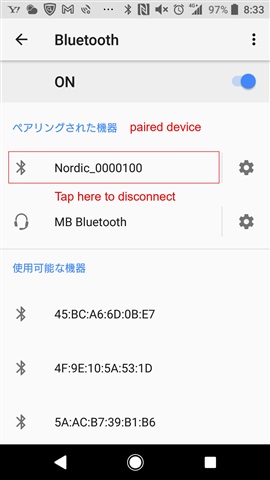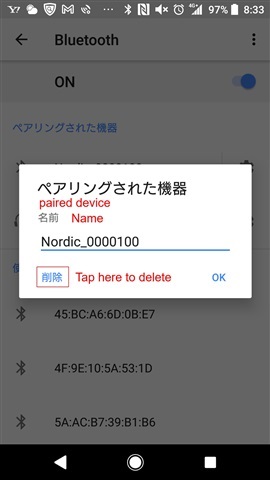Hello, I'm an engineer living in Japan.
【Development environment】
"PCA10040 (nRF52832)" x 2 (central/peripheral)
"SDK:17.1.0"
"IDE:Segger Embedded Studio for ARM7.10a"
This is a question regarding BLE security settings.
Below are the security measures I would like to implement on the peripheral side.
●Security settings that I want to set
1. When connecting for the first time, allow connections from any central device.
2. For the second and subsequent connections, only the central device connected the first time will be accepted.
* It does not appear when searching from the central device.
3. Delete connection information only when a specific button is pressed, and accept only the central device when connecting for the first time.
I used "ble_app_hids_keyboard" stored in the SDK of Ver17.1.0 as a reference.
Set up security using “peer manager” + “whitelist”
I ported it to a program I created, but the connection refusal behavior did not work.
When you check the log output from the "ble_app_hids_keyboard" sample program,
I understand that if the following log is output, the connection will be refused from the second generation.
"<info> app: m_whitelist_peer_cnt 1, MAX_PEERS_WLIST 8"
In the program I created, even if I connect from central
The connection could not be refused because the status did not change from "m_whitelist_peer_cnt 0".
I have confirmed that the advertisement signal from the peripheral is received by the central and is working.
Question 1)
Please tell me the conditions under which "m_whitelist_peer_cnt" is counted up in the sample program "ble_app_hids_keyboard".
Question 2)
Please let me know if there is a way to deny connections from the second device onwards using peer manager.
Question 3)
It seems possible to make the whitelist work without using a peer manager.
Please tell me the disadvantages (risks) in that case.
*This is the code written in "nrf_dfu_ble.c".
Question 4)
Please tell me the recommended method for implementing the above "security settings that I want to set".
It would be helpful if you could tell me with sample code.




